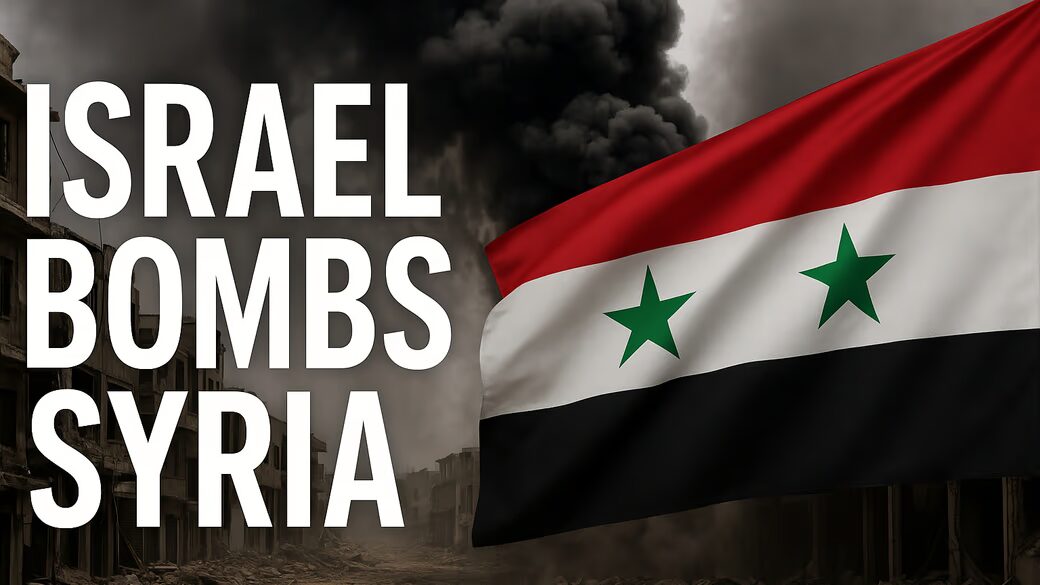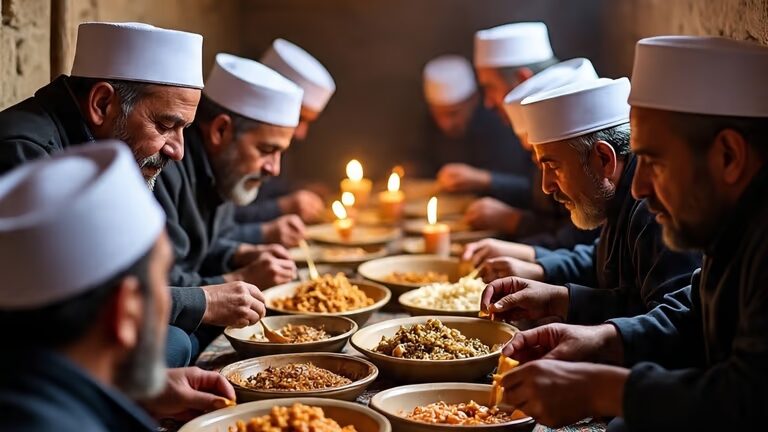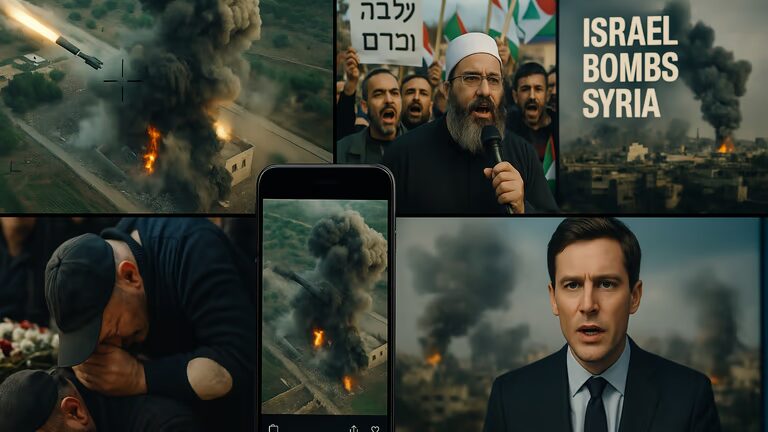
Between July 13 and 16, 2025, violence erupted amid the largely Druze population of the southern Suwayda province of Syria. The immediate precursor to violence was the abduction of a Druze merchant. However, below the surface, the deeper and camouflaged turmoil would trace its path through tribal rivalries resulting from estrangements, and the increasingly chaotic, fragmented state of what has turned from a localised skirmish between militias of the Druze and Bedouin tribes into a full-blown multi-sided confrontation that even involves the forces of the Syrian transitional government.
Reports of the number of casualties vary, as watchdogs like the Syrian Observatory for Human Rights and the Syrian Network for Human Rights put that figure at somewhere between 169 and 300+. More so, the bloodshed has caught the attention of the world, now that Ahmed al-Sharaa’s transitional government began militarily moving toward retaking control with negligible success.
ALSO READ- President Nominates Four New Members to Rajya Sabha
Israel Enters: Humanitarian Concern or Strategic Warning?
In an unprecedented and shocking move, Israel rained missiles on Syrian military positions within Damascus, including sites near the presidential palace and the Defence Ministry, on July 16. Syrian state sources claimed that three died and more than 30 were injured as a result of the attack.
This was not, however, a broad anti-regime campaign. It was according to Israeli Defence Minister Israel Katz justifiable in terms of surgical and symbolic purposes: a “protective shield” for the Druze, both inside Syria and within the borders of Israel. “Painful blows,” Katz warned, would follow if the military were to continue with targeting areas that the Druze mostly inhabit, such as Suwayda.
The strikes followed the news that Israeli Druze crossed from the Golan Heights to help their besieged brethren: just one more spicy twist in an already explosive mix.
Damascus Responds: Nationalism and Outrage-
The Israeli attack was condemned without any delay by Syria’s interim president, Ahmed al-Sharaa. He declared this a blatant violation of national sovereignty and accused Tel Aviv of deliberately heightening sectarian unrest to weaken Syria’s already fragile political situation.
Though the Sharaa government asserted it would protect the Druze community, many in Suwayda are sceptical. It is quite contradictory for Damascus to claim Guardianship of Druze Rights while just days ago its troops were engaged in a heavy-handed crackdown.
A Delicate Ceasefire and Shifting Power-
The ceasefire was brokered after considerable mediation by the U.S., Turkey, and Arab League states. The partial withdrawal of Syrian troops from Suwayda involved exceptional approval and included a transfer of temporary local security control to Druze religious leadership and trusted community factions.
This indeed is a compromise, but one secured by exceedingly fragile trust. Meanwhile, Israel has stepped up military action along the Golan Heights, warning of far greater retaliation if there should be further aggression against Druze civilians. Mobilisation of UN observers is unclear, as the scope of their mandate remains limited.
The Druze Dilemma: Caught Between Loyalties-
The Druze community in Suwayda is ripping apart over its response to internal threats and external interventions. Moderate leaders such as Sheikh Yousef Jarbou have publicly supported the ceasefire and encouraged a relationship with Damascus under international supervision.
On the other hand, more hard-line figures, like Sheikh Hikmat al-Hajari, demand complete Druze autonomy and thus reject any government oversight or foreign mediation.
Across the border, the Druze in Israel have mobilised and organised mass rallies crossing the border into Syria to support their brethren. They hold that if the Syrian army is not checked, “ethnic cleansing” would follow, and they have been appealing to the Israeli government to keep up with the protective operations.

Regional Implications: A Powder Keg Awaits-
An escalation in the region is very much a tangible danger. Syria accuses Israel of taking the Druze situation to create strategic buffers, endangering Iranian or Islamist encroachment along the Golan. Israel’s direct strikes into central Damascus-a rare event-are some attributes of the new engagement policy: perhaps a new doctrine imbued with ethno-strategic interventions.
With the Iranian-backed militias so deeply embedded in Syria, this attack may now compel a response. This adroitly puts the region’s Israeli and American forces on alert.
Turkey, as well as the Gulf countries, have been exhorting restraint among their interests regarding the future of Syria and are also supportive of ceasefire efforts. It seems that shortly the United Nations Security Council will deliberate on the airstrikes, sovereignty, and the humanitarian disaster arising in Suwayda.
A Complex Future: What Comes Next?
Short-Term Forecast:
The ceasefire is tenuous. Whatever happens next will depend on whether the transitional government respects the Druze local authority. Peace may be held or lost.
Israel has stated the conditions: withdraw Syrian troops from Druze areas and disarm hostile militia tribes. If the conditions are not met, the Golan Heights could flare up once more.
Medium-Term Outlook:
The Druze now stand in the centre of Syria’s internal talks. Then there is the question of minority rights, regional autonomy, and protection against sectarian violence-any future constitutional framework must address these things.
This crisis might have set a precedent. The Israeli position could give courage to other communities wishing to seek international backing against Damascus or its aligned militias.
Long-Term Outlook:
A permanent settlement requires trust, which is hard to come by at this time. The danger lies in the Druze being used as pawns-the Syrian government, the tribal militias, and foreign powers.
If handled incorrectly, the crisis risks unfolding a new proxy war involving Iran, Israel, and perhaps Russia. The road to peace in Syria, strewn with already dished betrayals, just got that much steeper.
Takeaways for the Region and the World-
This narration of Israel sees itself as a humanitarian actor, defending an embattled minority. Critics argue it is about preemptive security and strategic depth.
- The reality of the Druze: once united by identity, they now face diverging political futures: some wish for integration, others demand independence.
- Turning point for Syria: Proving that the transitional government can keep order and go for inclusiveness without reverting to authoritarian tactics will be the hallmark of its turning point.
- Key to international Diplomacy: Therefore, the only way to prevent all further collapse, given overlapping interests and hostilities, is a multi-lateral diplomatic effort.
Information Warfare and Media Narratives-
While people clashed in Suwayda and missiles poured down upon Damascus, another war raged quietly and yet feverishly-that of control of narrative. Perception is power in the digital age, and every actor is using the media to vindicate their actions and mould world opinion. International media wrestled hard to penetrate the fog of disinformation.
Since both actors have politicised the facts one way or another, the world audience is now left to fragment the entire truth. In such an atmosphere, media literacy and independent verification have become vital tools-a luxury they can hardly afford. The crisis in Suwayda is not simply redrawing the military map in the region-it is reshaping the digital handbook of modern conflict storytelling.

Summary: Between Survival and Strategy-
Israel’s July 16 airstrikes are, perhaps, a turning point-even changes in Middle Eastern geopolitics, as they were conducted under the name of humanitarian protection and go far beyond it.
The Druze have always maintained a neutral stance throughout history, but stand now right in the eye of the political storm. Whether they will emerge stronger or further fragmented depends on the circumstances in the following weeks – diplomacy, de-escalation, or even deeper entanglement.
One thing is sure: while the world holds its breath, the crisis in Suwayda is not closing. The next chapter shall define Syria’s future, probably more than its past ever did.
